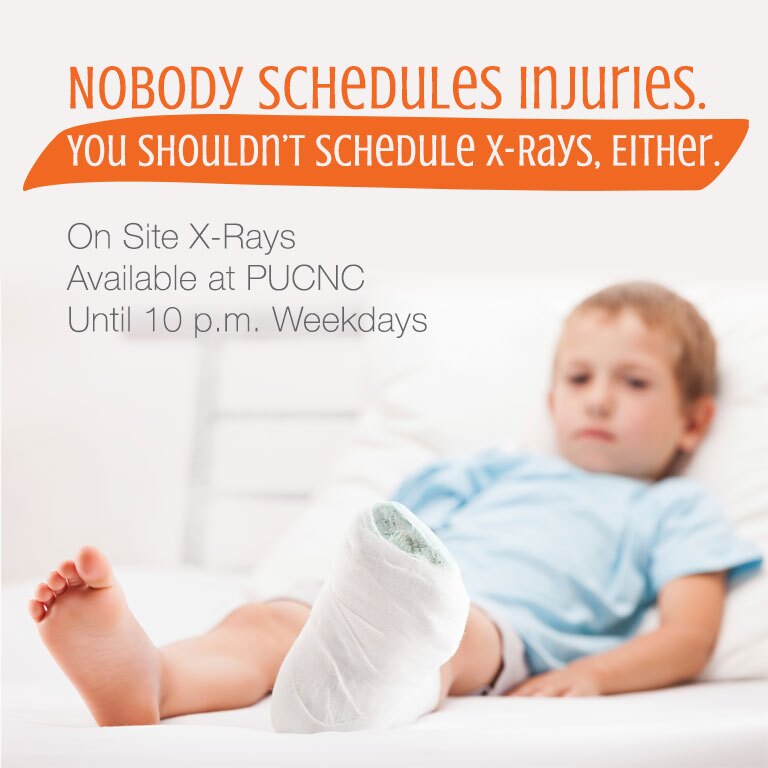At one point, broken bones were almost a rite of passage for kids growing up. While better understanding of bone development and improved respect for safety has helped protect kids now better than ever before, kids are still kids. Injuries are bound to happen. If you think your child suffered a fracture, avoid the emergency room with on-site X-rays from PUCNC, available until 10 p.m. weekdays and 8 p.m. weekends.
Preventing Bone Fractures

Building healthy bones early can reap a lifetime of benefits, helping your children avoid fractures and osteoporosis in adulthood. While a glass of milk at every meal was once the yardstick for bone heath (it’s still a great idea!) there’s a lot more to building strong bones.
Trade Screen Time For Exercise
Most parents know that daily exercise helps fight obesity and ward off diabetes, but it also helps children build strong bones. Any weight-bearing exercise such as running or jumping helps build bone mass. As an added bonus, it’ll improve your child’s strength and reflexes, helping them avoid the kinds of spills that lead to fractures in the first place.
Know Your Calcium
Your child’s need for calcium grows as they get older, so it’s important to understand your nutritional responsibilities as a parent. The Natinal Institutes of Health recommend children under the age of four receive 700 mg of calcium each day. Kids aged four to eight need 1,000 mg, and older kids, nine to 18, require 1,300 mg each day for optimal bone health. That’s 30 percent more than the recommended intake for adults.
Think Past the Dairy Cooler
Because milk is rich in calcium, it’s a staple in promoting healthy bones, but it’s not the only option. Children who are sensitive to milk or picky eaters can still receive adequate calcium from a variety of foods. Sardines, calcium-fortified soy beverages, calcium-fortified breakfast cereals and some green vegetables are all considered calcium-rich foods that promote bone health.
Protect Them
Reduce the chances of a severe injury by wearing proper safety gear. Children involved in football, skateboarding and lacrosse are considerably less at risk for bone injuries when they wear proper protective gear. Protection doesn’t stop with sports: Always buckle up in the car, while keeping stairs and walkways free of tripping hazards.
Take the Cigarettes Outside
Cigarette smoke reduces the amount of calcium bones can absorb – and secondhand smoke has nearly the same impact on bone health as active tobacco use. If you smoke, do it outdoors to shield your child from exposure to secondhand smoke. Their bones (and their lungs, their heart and ears) will thank you for it.

